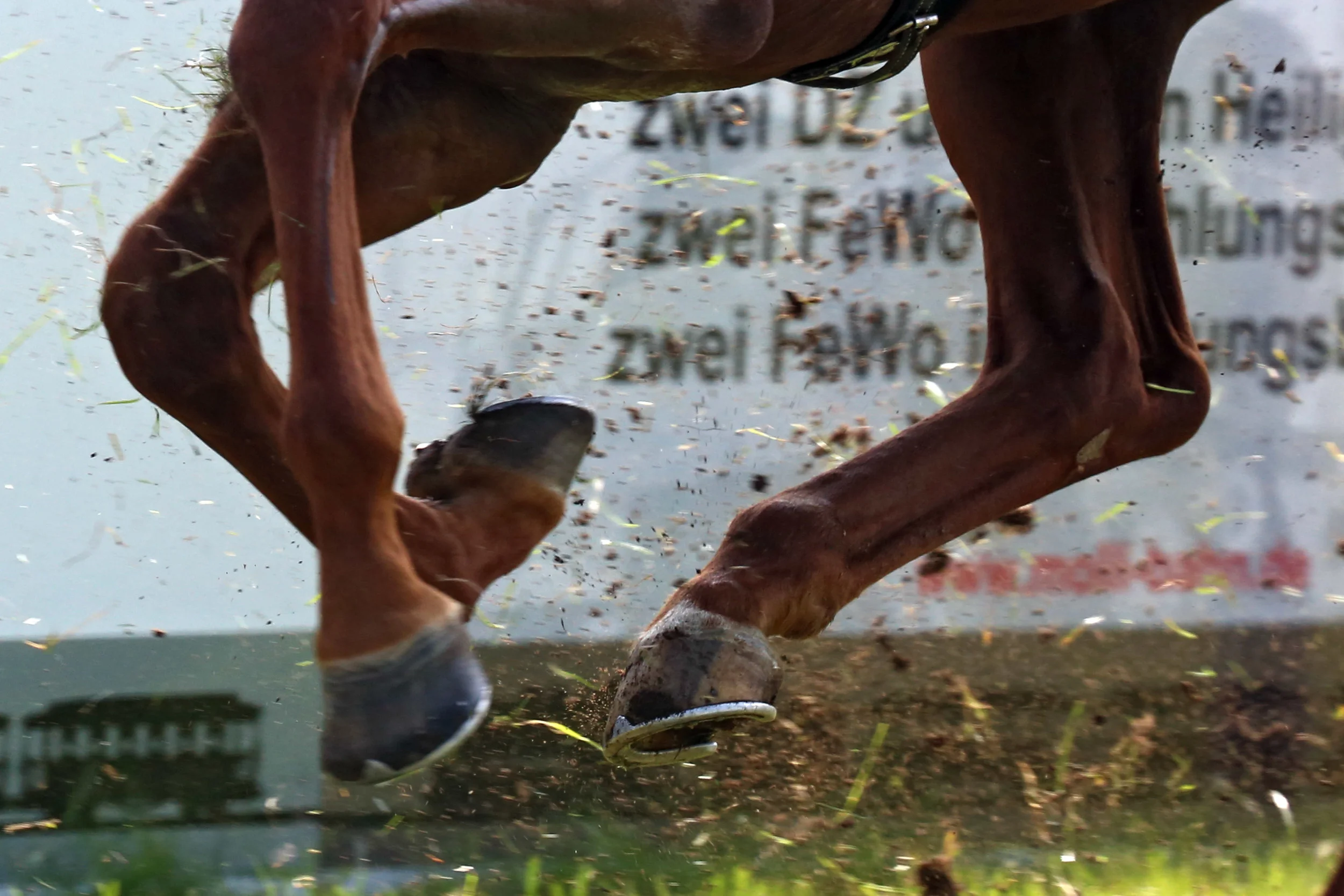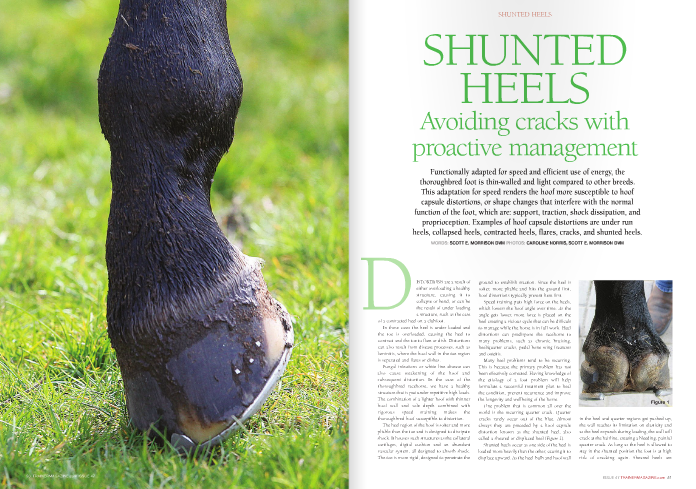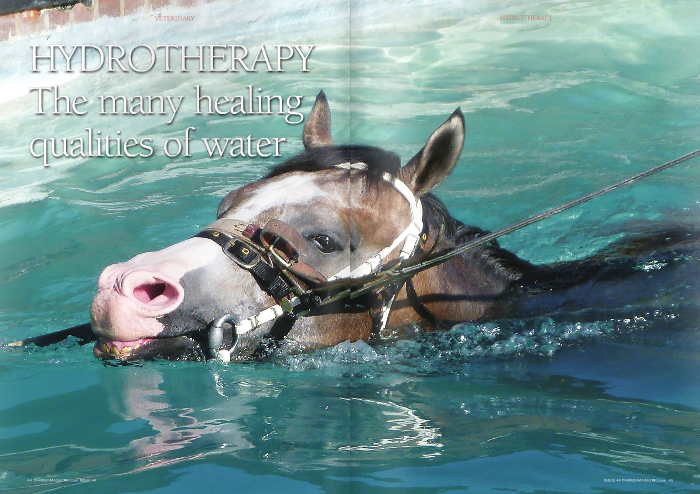Incident Management
The UK Fire and Rescue Service along with large animal veterinary associations have responded to the need for a joined-up approach and standard operating protocols when dealing with emergency situations involving large animals. This article explores the concepts and techniques required to safely resolve such incidents and demonstrates how these skills in planning for and managing the unforeseen or unwanted event are being translated into the everyday operational activity of the equine professional community.
Do the muscles of the respiratory system affect performance?
Over the last two decades the Horserace Betting Levy Board (HBLB) has funded substantial research to understand how various body systems respond to training. For example, because of this HBLB investment we now know that the hearts of thoroughbred racehorses get bigger as a response to athletic training and that big hearts are typically associated with better performers. We also know that bones respond to training by remodelling and hence become better prepared for the strains associated with galloping.
Climate Change - New equine diseases
Worldwide, when there are new disease outbreaks – human or horse – there seems to be a link between climate change and infectious disease risk. Warmer environment and changing weather patterns influence many factors that encourage disease outbreaks, disease transmission, and the emergence of new diseases.
Are stress fractures and training surfaces linked?
Stress fractures not only lead to training interruptions but if they are not identified early and managed appropriately they can be associated with subsequent catastrophic fractures. Stress fractures of the humerus, tibia, ilium and cannon bone (aka third metacarpal bone or McIII) are most common. Stress fractures are a late stage on a pathway of stress-related bone injury.
Hooves and ground surface - the impact of intentional shoeing interventions
The interaction of a horse’s foot and the ground surface is complex. Stance—that part of the stride when the foot is in contact with the ground—can be divided into three phases, which determine the loading environment of the limb: impact, mid stance and push off. Loading of the limb determines how it functions and also influences where injury may occur. Research funded by the Horserace Betting Levy Board at the Royal Veterinary College has focussed on the foot and is allowing a greater understanding of the effect of changes in surface or shoeing on stance, on remodelling of the tissues and ultimately on the risk of injury.
Shunted heels - Avoiding cracks with proactive management
Functionally adapted for speed and efficient use of energy, the thoroughbred foot is thin-walled and light compared to other breeds. This adaptation for speed renders the hoof more susceptible to hoof capsule distortions, or shape changes that interfere with the normal function of the foot, which are: support, traction, shock dissipation, and proprioception.
Streptococcus zooepidemicus - The bug that can place bets
The Horserace Betting Levy Board (HBLB) has invested over £7 million to protect racing and ensure horse welfare by disease surveillance and research on prevention of equine infections over the last decade. Infection with bacteria is one of the important causes. One bug in particular that can be found in many cases is Streptococcus zooepidemicus.
Respiratory disease affects a large proportion of young horses around the world, reducing performance with significant disruption to training and racing schedules. Inflammatory airway disease affects young horses in particular and it generally causes mucus in the trachea. Some estimates suggest that in British Flat racing yards, for every 100 horses, each month there will be nine cases.
Coughing and nasal discharge can last around eight weeks and some animals are affected again and again. All of which leads to significant cost to the racing industry. As a result, this problem has been a long-standing focus of attention for the Horserace Betting Levy Board’s (HBLB) veterinary research efforts.
Bacterial genetic code
One reason why bacteria from the same species might affect horses differently is that there are different strains within a bacterial species. This is rather like different breeds of horses – a Falabella pony is the same species as a thoroughbred – but it looks and acts very differently. All living things, from human to single-cell algae in the ocean, have a genetic code written in DNA. Understanding this genetic code can reveal how organisms live and function.
“In the same way as Strangles, a horse that has recovered from Streptococcus zooepidemicatus might no longer be outwardly affected itself but it may still carry the bug”
An HBLB-funded collaborative team working in Dr Andrew Waller’s lab at the Animal Health Trust and Professor Josh Slater’s lab at the Royal Veterinary College have set out to unlock the genetic make-up of different strains of Streptococcus zooepidemicus in order to understand better if some strains of this bacteria cause disease while others are relatively harmless. The researchers also looked at how different strains of Streptococcus interact with the horses’ immune system. The ulitmate goal of this research is to gain the knowledge which will lead to new vaccines.
A global research effort
The researchers started by developing a technique to produce a unique ‘genetic fingerprint’ with which to identify each different strain of the Streptococcus. They then tested samples from sick horses around the world and so far 318 different types of S. zooepidemicus have been identified with two particular strains being responsible for outbreaks of respiratory disease.
Insight from an ancient threat: Strangles
The researchers had some clues about what they might find in the samples from horses with Streptococcus zooepidemicus infection because they already had extensive experience in similar research in Strangles. Strangles is one of the oldest known, feared and most frequently reported infectious diseases of horses throughout the world. Typical signs of Strangles include abscessation of the lymph nodes in the head and neck, with swelling to such an extent that some horses are literally suffocated. It is caused by a relative of Streptococcus zooepidemicus, known as Streptotococcus equi. With Strangles, it is very clear that some recovered horses become carriers. Carriers show no outward signs and this hidden infection enables the bacteria to be spread around undetected.
S. zooepidemicus colonies grown on a blood agar culture plate
Silent carriers lead to infection in youngsters
In the same way as Strangles, a horse that has recovered from Streptococcus zooepidemicatus might no longer be outwardly affected itself but it may still carry the bug. For example, the particular strain responsible for the outbreak of respiratory disease in Sweden was found in a healthy horse eight months after the horse made a full clinical recovery.
This persistence of S. zooepidemicus in thoroughbred racehorses that have recovered from respiratory disease allows transmission to susceptible animals and can occur when, for example, older recovered horses are mixed with the next year’s intake of young horses. It is likely that immunity to one strain of Streptococcus does not fully protect a horse from all the other strains, so young horses can often succumb to a succession of respiratory infections as they gradually build up immunity to mix of Streptococcus zooepidemicus strains that persist in that particular yard.
Bacterial balancing acts
In order to be able persist in recovered horses Streptococcus zooepidemicus must be able to survive despite the fact it is being attacked by the horse’s immune response, and at the same time, the bug must be ready to infect a susceptible animal should the opportunity arise. S. zooepidemicus strains have proteins on their surface and some of these proteins inactivate the horse’s immune response. Other proteins enable the bacteria to stick to the internal surfaces of the horse in order to establish the infection, almost like an ice climber clinging to the surface of a glacier with the crampons on his boots. If he loses his crampons, he is in big trouble.
Thus, these surface proteins play key roles for the bacteria, but they are also a vunerable point and can be targeted by the horse’s immune response to disable the bacteria. Therefore, balancing the array of surface proteins displayed with the particular requirements of the bacteria at any given time is critical if the bacteria are to successfully establish an infection and transmit to a new susceptible animal.
THERE'S MORE TO READ ONLINE....
THIS ARTICLE FIRST APPEARED IN EUROPEAN TRAINER - ISSUE 47
TO READ THIS ARTICLE IN FULL - CLICK HERE
Author: Celia Marr, Andrew S. Waller & Josh Slater
Cardiac rhythm - new technology brings new insights
When a horse runs badly, after lameness and respiratory disease have been ruled out, the heart is usually the next suspect. A new study, published in the Equine Veterinary Journal, provides significant insights into cardiac rhythm abnormalities that can develop during and after racing in standardbreds.
The Racehorse: A Veterinary Manual - Book Review
While several texts are available on equine orthopaedics and sports medicine, information relating to the racehorse - taking into account the practicalities of management peculiar to the racing industry - is often fragmented and contradictory. A new and hugely useful, if not indispensable, book by leading equine veterinary practitioner Pieter H L Ramzan, BVsc(Sydney), MRCVS provides a practical source of accessible information for the clinician, trainer and owner.
Treating sore shins - can current research make a breakthrough?
From the turn of the year, consignors on both sides of the Atlantic have been battling with the phenomenon of 'bucked shins' otherwise known as sore shins. Thomas O'Keeffe looks into the research being done to see if a breakthrough into the treatment of this condition is imminent.
CLICK ON IMAGE TO READ ARTICLE
THIS ARTICLE FIRST APPEARED IN EUROPEAN TRAINER - ISSUE 46
HBLB tendon & ligament research - equine injury prevention and management
Professor Celia M Marr looks into the work carried out by the HBLB over the past 50 years aimed at the prevention and management of tendon and ligament injuries, most recently looking at research into stem cells.
Pastern Fractures - Split Pasterns, the injury that gets worse before it gets better
Fractures are relatively common injuries in Thoroughbred racehorses. This relates to the high athletic demands of racing and training, and the cumulative stresses imposed on the musculoskeletal system by the repetitive nature of race training.
CLICK ON IMAGE TO READ ARTICLE
THIS ARTICLE FIRST APPEARED IN - EUROPEAN TRAINER MAGAZINE ISSUE 45
Diagnostic imaging in yearlings - Predicting future soundness
The quest to own or train the perfect racehorse can have many starting points. For many people the search for the Holy Grail begins at the yearling sales, where horsemen from around the globe inspect and agonize over young horseflesh, dreaming and hoping of attaining that future champion.
CLICK ON IMAGE TO READ ARTICLE
THIS ARTICLE FIRST APPEARED IN - (North American Trainer - issue 31 - February 2014) (European Trainer - issue 45 - Spring 2014)






























